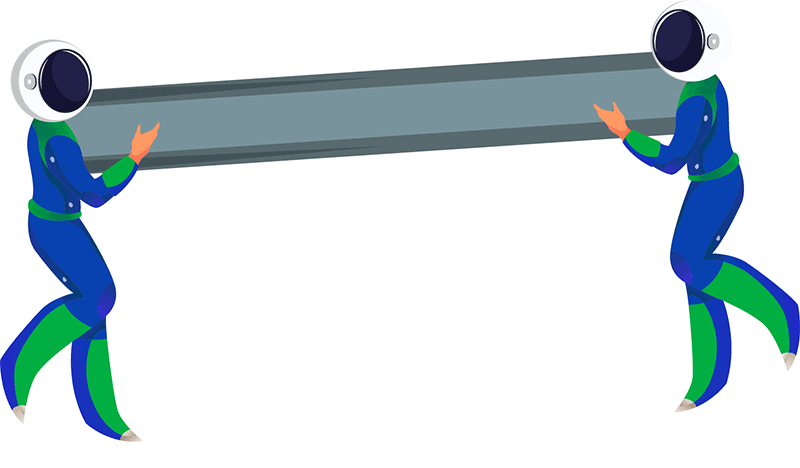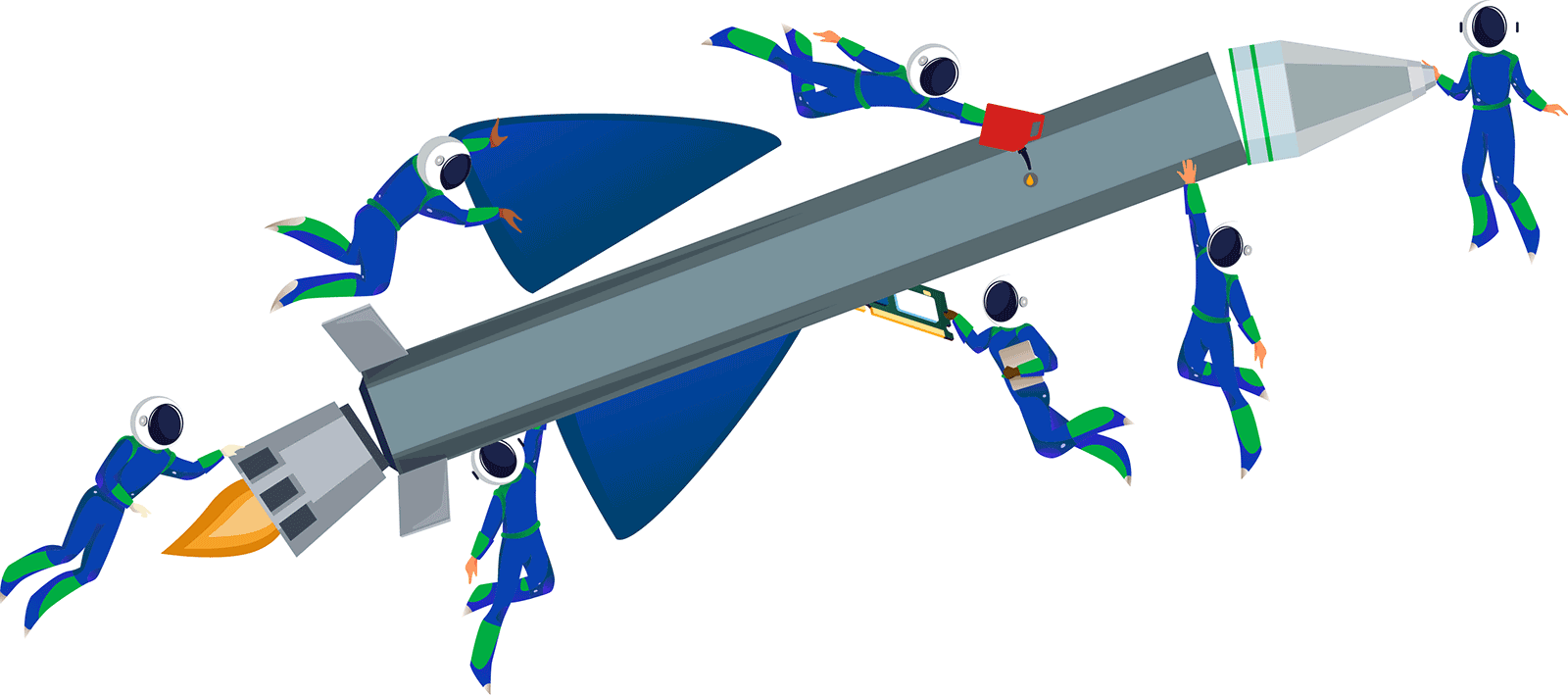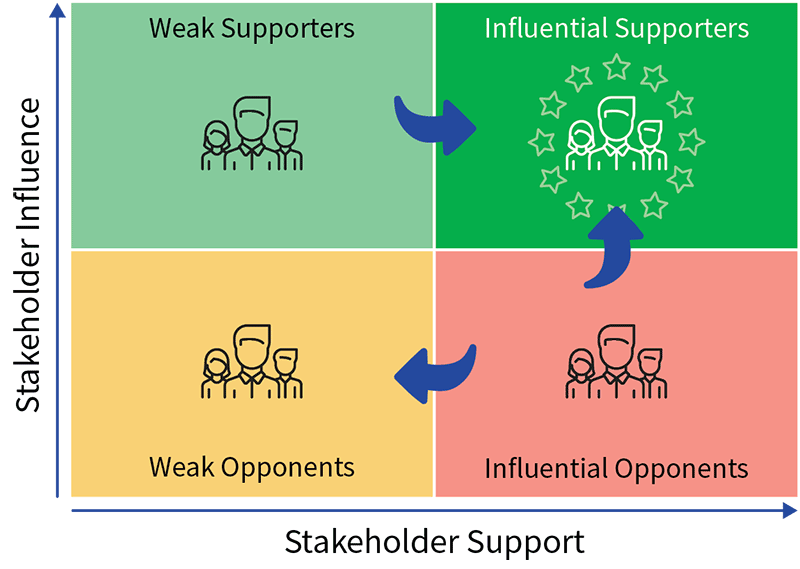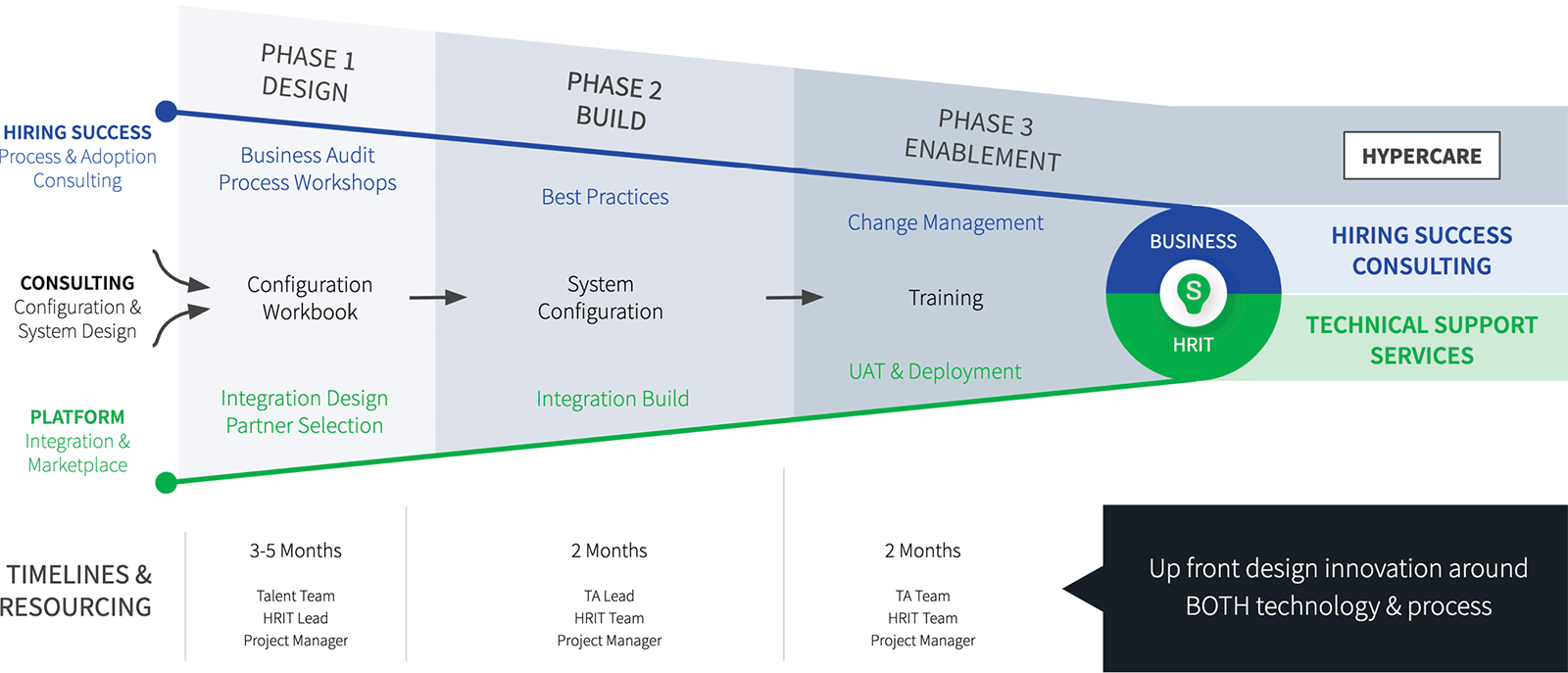Continue Reading
Internal Stakeholder Alignment
As the recruiting and workforce landscape goes through rapid changes in the next decade, talent acquisition leaders will lead many exciting, new initiatives. Internal stakeholder alignment is critical to project success, but involving the right people at the right time, in the right order, and clarifying mutually-beneficial outcomes is a project in itself.
To help you, we prepared an internal stakeholder management toolkit:
- Believe in and communicate the business value of TA initiatives.
- Know with whom you’re working and what they care about.
- Define desired actions and outcomes from each stakeholder and how the project benefits them.
Communicating the Value of TA
The best people build the best products and businesses. The TA function attracts, selects, and hires these people. This vital relationship is sometimes overlooked. Clearly aligning talent initiatives with strategic business objectives makes it easier for business partners to understand the relevance of TA projects across the entire organization. Articulating and evangelizing TA’s value is one of the most important things you can do to attain the support and resources necessary for success.
Identifying the Key Players
VP Analyst
Gartner
Distinguished VP Analyst
Gartner

Knowing your audience is half the battle. Projects can stall or be cancelled altogether if an important stakeholder, sometimes an unobvious one, is not made part of the process. We recommend you map out all the relevant stakeholders and analyze what they’re motivated by and measured against.
Stakeholder Analysis
The first tool in your stakeholder analysis kit is a list of questions to ask yourself and your team. Let’s use a new TA suite purchase initiative as an example. After you think through these questions, you should have a comprehensive idea of with whom you should talk and how to get them on board.
| Questions for Performing a Stakeholder Analysis | Answers | |
|---|---|---|
| 1 | What is the process for decision making in an ATS purchase? | |
| 2 | Who is involved and what is their role? | |
| 3 | Why are they a stakeholder in the ATS purchase? | |
| 4 | What’s their influence over ATS decisions and actions? | |
| 5 | What is their level of knowledge about ATS? | |
| 6 | What do they need to know about ATS and what do they say they want to know? | |
| 7 | What resources or actions do we need from them? | |
| 8 | How does buying a new ATS help them do their job better? | |
| 9 | Are they supportive, neutral, or against ATS transformation? | |
| 10 | What will it take to turn them into supporters? |
Different Motivations

CEO
CEOs care about hiring the best talent. However, most have not devised new ways to properly evaluate and reward their TA function. In order for TA teams to receive the resources and cross-functional support necessary for success, CEOs need to view TA as an important influencer on company culture and business productivity. Instead of efficiency metrics such as volume, time, and cost, CEOs should shift their focus towards the investment necessary to make a top-notch hire, the percentage of roles filled on time to meet business targets, and other measurements that illustrate TA’s impact on the business.

CHRO / HRIS / HRIT
Once CEOs stop evaluating CHROs on cost, CHROs will have less pressure to cut spending. This will offer TA more flexibility in terms of investing resources in modern technology and skill sets. TA leaders need CHROs to champion the TA function by acting as executive sponsors who want to drive TA initiatives forward.

CTO / IT
CTOs often want to unify technology systems in order to minimize maintenance cost and support. If you’re planning to buy a best-of-breed TA system that is not part of the HCM suite, CTOs may resist the change. However, if you can demonstrate to IT that the new system is easy to manage, secure, compliant, compatible with current systems, and futureproof, they are far more likely to be receptive towards purchasing a new system.

CFO / Finance / Procurement
CFOs are cost-driven, but they also keep their eyes on revenue. Once CFOs start to consider the revenue and ROI generated from hiring better talent at a faster pace with a new TA, they are more likely to support the investment.

CMO
The line between corporate brand and employer brand is starting to blur. Millennials and Gen Z now account for 38% of today’s workforce. What are their top criteria when choosing a company to work for? Corporate mission and values, which, perhaps surprisingly, rank above wages and benefits. CMOs are motivated to weigh in on employer branding and ensure consistency with overall branding. If your new system can improve candidate experience and branding, CMOs are likely to be on board. They may also contribute their expertise in marketing features such as campaign management within your new system, but their influence can only go so far.

Users
An often neglected, but absolutely necessary group to involve are the intended users. In the case of purchasing a new ATS, try to secure buy-in ahead of time from the following people: recruiters, hiring managers, interviewers, store owners, or regional managers. Before you start investigating new solutions, it’s important for users to vocalize their pain points with the existing solution and what they desire in a new solution.
This group will be good to involve throughout the project. From our experience with developing custom communication and training plans, we find that early and frequent discussions with users can increase overall adoption by up to 200%. You will need a team of champions to help carry your vision across the organization, and end users will provide the first line of support in helping others after launch. We call this “adoption through osmosis”—having people who are proficient with and passionate about the new system work alongside and influence those who need to learn the skills and processes.

Pro Tips
- Identify system champions throughout the organization, from the executive level to the end user.
- Create strategic communication and training plans that excite people about the transformation.
Stakeholder Matrix
The second tool in your stakeholder analysis toolkit helps you prioritize with whom you should talk. You can use the graph to segment stakeholders in terms of their stance (whether they support you or not) and their influence (specifically, on the issue/initiative at hand). Once you place stakeholders into the correct group, you can create a game plan to collaborate with each segment.

The strategy here is to regularly engage your influential supporters, soften or even align with your influential opponents, and increase the influence of your weak supporters. Weak opponents need the least attention because they’re the least motivated to be a roadblocker. Influential opponents, if unaddressed, can derail your entire project. However, influential opponents can potentially become weak opponents—they might remain unsupportive or decide to be less involved in the project. They may also become influential supporters if you pinpoint what aspects of your project or initiative resonate with them. As to your weak supporters, increasing their influence is a win-win for both you and them.
Selling TA’s Value to Your Stakeholders
Building an Effective Project Plan
The third tool is a project plan with clear timelines, stakeholders, and action items. In a large multi-month or even multi-year project, breaking the project into phases helps you focus on a smaller subset of stakeholders. A detailed project plan helps you define desired actions and outcomes from all parties involved. It’s also important to consider the relationship between stakeholders, you may need to address some before others. Laying out the timeline helps you schedule your plan of attack.
This is an example of a SmartRecruiters implementation and customer success project plan.

Hiring Success in Action Managing Change Through Total TA Transformation
– Jared Best
Hiring Success Director – Retail
As a leading retail brand with 24,500+ employees and 1,000+ locations in 16 countries across three brands, the company needed to attract high-quality candidates and meet their aggressive hiring needs of specialized corporate retail hiring, university recruiting, and supply chain hiring.
The three recruiting teams were on three separate recruiting systems that didn’t sync, and were dissatisfied with their existing solutions for similar reasons. The tools didn’t provide a candidate experience on par with their world class brand experience. They also didn’t track any useful data to help the team gain insights into their hiring performance. The corporate TA team led the effort to make hiring better.
| February 2017- June 2017 |
Optimization of Existing Solution The Head of TA decided to look for a new solution at the same budget. As they evaluated vendors in the market, they realized other recruiting tools had much stronger capabilities—even if they upgraded their current system, it would still be lacking core functionalities that the team needed. |
||
| June 2017 – August 2017 |
Current State Future State Exercise The existing ATS was part of an HCM suite, so an IT leader insisted on maintaining a suite system, voting against the decision to switch. The TA team conducted a Capabilities Gap Analysis and showed the IT team the discrepancy between what the company needed from an ATS to succeed at hiring and what the existing solution was able to offer. They also outlined 5 key project objectives:
This softened IT’s opposition and eventually led to the IT team vetting external vendors. |
||
| August 2017 – December 2017 |
RFP |
||
| December 2017 – January 2018 |
Vendor On-Sites & Shortlists On the other hand, they had a new system that offered everything they needed and the team felt like they were getting a partner that was invested in their success. The new system was a one-stop shop with full analytics capabilities, a more engaging candidate experience, and more manageable infrastructure. The new system could even help them centralize all recruiting activities across different hiring models, from university hiring and corporate hiring to supply chain/store hiring. All this could be accomplished with the same budget and within the same timeline. The choice was clear. |
||
| January – February 2018 |
Shortlisted Vendor Reviews |
||
| March 2018 |
Vendor Selection It was a long and challenging journey of getting every stakeholder on board while moving the project forward, but it was well worth it. The decision to purchase a new solution went forward, and the company has been a happy SmartRecruiters customer since March 2018. |